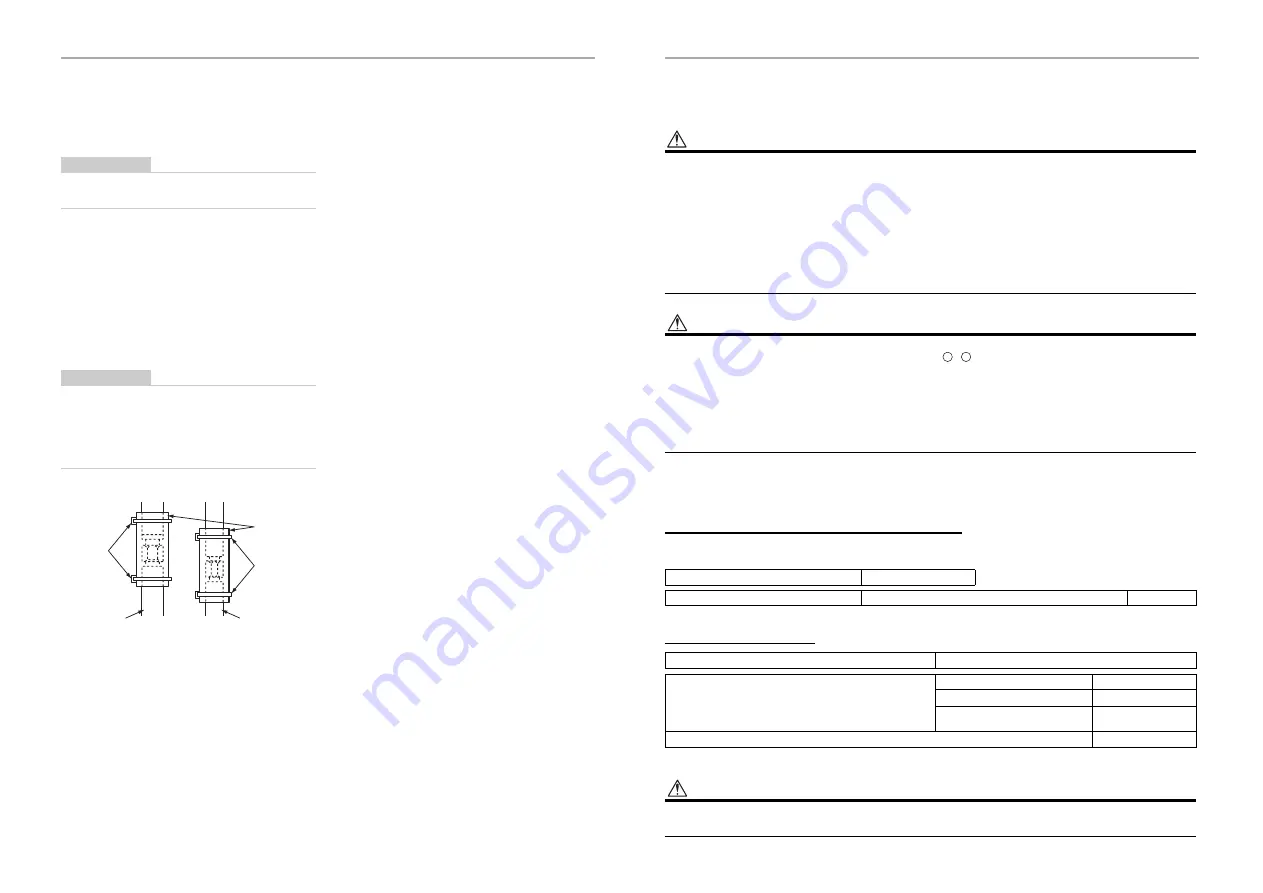
– 16 –
Gas leak check
Check with a leak detector or soap water whether gas
leaks or not, from the pipe connecting section or cap of
the valve.
REQUIREMENT
Use a leak detector manufactured exclusively for HFC
refrigerant (R32, R410A, R134a).
Heat insulation process
Apply heat insulation for the pipes separately at liquid
side and gas side.
• For the heat insulation to the pipes at gas side, use
the material with heat-resisting temperature 120°C
or higher.
• To use the attached heat insulation pipe, apply the
heat insulation to the pipe connecting section of the
indoor unit securely without gap.
REQUIREMENT
• Apply the heat insulation to the pipe connecting
section of the indoor unit securely up to the root
without exposure of the pipe. (The pipe exposed to the
outside causes water leak.)
• Insulate the refrigerant pipe in the indoor unit securely
up to the point shown in the following figure.
Heat
insulator
(Accessory)
Gas side
pipe
Heat
insulator
(Accessory)
Binding band
(Accessory)
Liquid side pipe
7
Electrical connection
WARNING
•
Use the specified wires for indoor and outdoor connecting wires. Securely fix them to prevent external forces
applied to the terminals from affecting the terminals.
Incomplete connection or fixation may cause a fire or other trouble.
•
Connect earth wire. (grounding work)
Incomplete earthing cause an electric shock.
Do not connect earth wires to gas pipes, water pipes, lightning conductor or telephone earth wires.
•
Appliance shall be installed in accordance with national wiring regulations.
Capacity shortage of power circuit or incomplete installation may cause an electric shock or a fire.
•
Under no circumstances, the power supply wire or the indoor and outdoor connecting wire must not be
connected in the middle (Connection using a solderless terminal etc.).
Connection trouble in the places where the wire is connected in the middle may give rise to smoking and/or a fire.
CAUTION
• For power supply specifications, follow the Installation Manual of outdoor unit.
• Do not connect 220 – 240 V power to the terminal blocks (
,
) for control wiring.
Otherwise, the system will fail.
• Do not damage or scratch the conductive core and inner insulator of power and system interconnection wires during
peeling them.
• Perform the electric wiring so that it does not come to contact with the high-temperature part of the pipe.
The coating may melt resulting in an accident.
• Be careful of fan operation when the circuit breaker is turned on. If the refrigerant leak detection sensor detects the
refrigerant leak, a fan automatically rotates even while an air conditioner stops. Be careful not to be injured by the fan.
• Do not turn on the power of the indoor unit until vacuuming of the refrigerant pipes completes.
Wiring specifications
Indoor / Outdoor connecting wires specifications
Indoor unit power supplied from outdoor unit
• The outdoor unit power supply patterns vary on models.
*Number of wire × wire size
*Including earth line
Remote controller wiring
* The remote controller wiring length differs depending on the remote controller used. For details, refer to the
Installation Manual attached to the remote controller.
CAUTION
The remote controller wire and Indoor / Outdoor connecting wires cannot be parallel to contact each other and cannot
be stored in the same conduits. If doing so, a trouble may be caused on the control system due to noise or other factor.
Indoor unit power supply
1~50 Hz 220 - 240 V
Indoor / Outdoor connecting wires*
4 × 1.5 mm² or more (H07 RN-F or 60245 IEC 66)*
Up to 70 m
Remote controller wiring, remote controller inter-unit wiring
Wire size: 2 × 0.5 to 2.0 mm²
Total wire length of remote controller wiring and remote
controller inter-unit wiring = L + L1 + L2 + … Ln
In case of wired type only
Up to 500 m
Two remote controllers
Up to 300 m
Two remote controllers with
wireless remote controller
Up to 400 m
Total wire length of remote controller inter-unit wiring = L1 + L2 + … Ln
Up to 200 m
A
B
31-EN
32-EN
Summary of Contents for RAV-HM1101FT-E
Page 31: ...EB99847901 DH91308301 ...















































